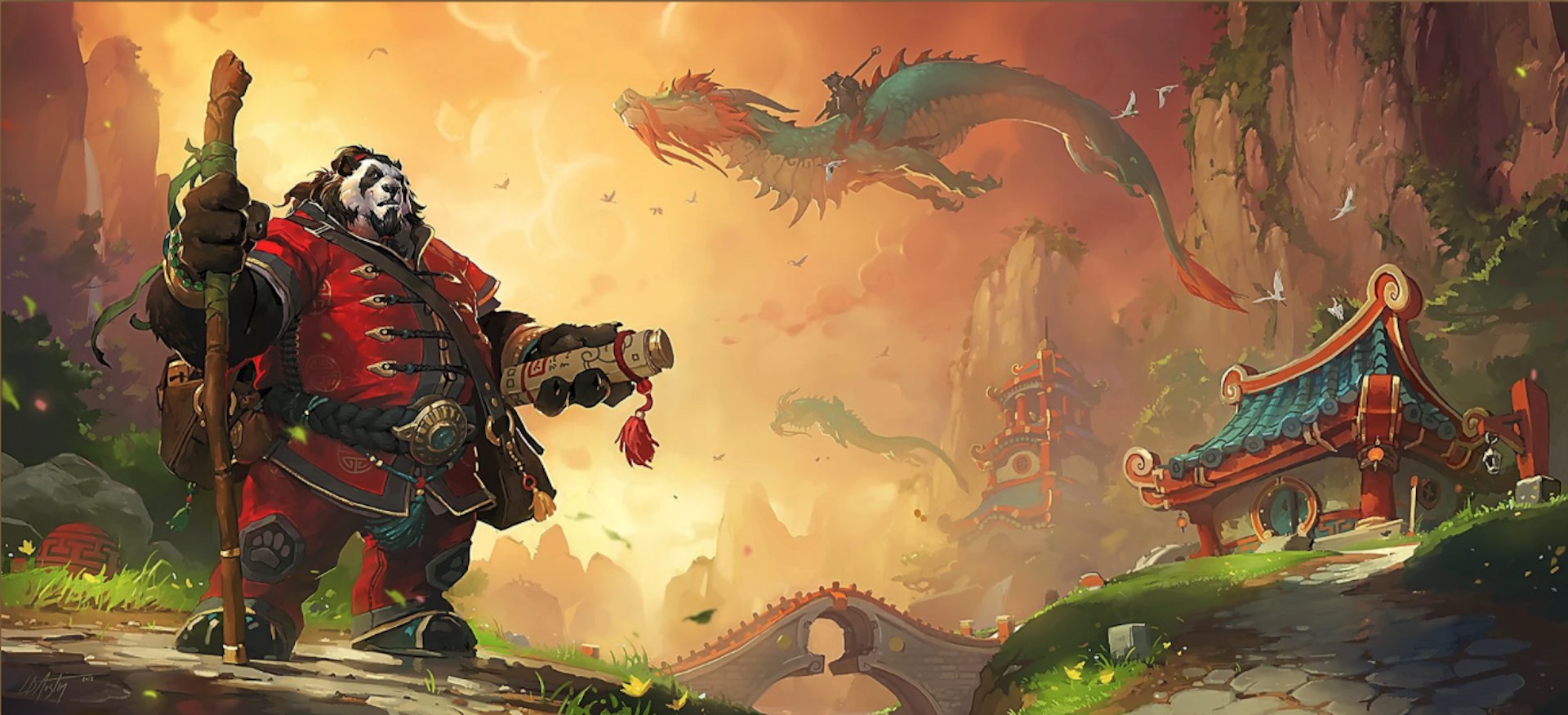Elf Drawings Easy Fantasy World of Warcraft
article
World of Warcraft: high fantasy, boldly drawn
The stunning art of World of Warcraft.
Looking at World of Warcraft, one can't help but be awed by the sheer magnitude and longevity of this long-running video game series.
Kicking off in 1994 with PC and Mac game Warcraft: Orcs & Humans, this series of Real Time Strategy games would evolve into the extraordinary World of Warcraft 'Massively Multiplayer Online Role-Playing Game' we know today, an ever-evolving online environment connecting millions upon millions of players.
World of Warcraft, 'WoW' for short, defined the MMORPG genre, taking both the genre and online gaming itself to new levels of sophistication, simultaneously pioneering new (subscription-based) business models and in-game modes and mechanics.
Saying WoW is 'highly successful' doesn't quite cut it, though.

Pandaren with Lanterns is official concept art for the game World of Warcraft, a game by Blizzard Entertainment.
Sure, the numbers are dazzling. WoW reportedly hit its one hundred millionth (!) registered account by 2016, representing an estimated total of $9.23 billion US dollars earned in the timespan of 2004 (when WoW first went live) to 2017.
High fantasy
But numbers - however impressive - aren't everything. WoW has an enormous cultural impact too, uniting people from all over the globe who invest countless hours in the myriad of activities WoW offers.
They play in a multi-layered world that's hard to describe if you have never engaged with it: it offers both large-scale wars involving hundreds of active players, and also basic solo tasks; it invites both grand strategic scheming of guild against guild, and moment-to-moment decision making about what to do next.
And everything under the umbrella of a high fantasy world that has developed far beyond the 'orcs versus humans' proto-story of that 1994 installment.
Today, there's complete WORLDS within the world of Warcraft, huge swaths of land filled with cities and towns, each with their own population of various races, and each land with their own physical make-up, and specific challenges.
Art Direction
Unifying this ever-expanding world is the great art direction and iconic art that captures the imagination.
The 1994 game's theme was heavily inspired by Dungeons & Dragons role playing games, and sought to capture the brilliance of the tabletop fantasy games by envisioning larger-than-life orcs fighting bulky medieval knights.

Warlords of Draenor is official concept art for the game World of Warcraft, by Blizzard Entertainment.
The isometric perspective in these early WoW games, as well as the limited pixel count, made it paramount characters where 'readable' at any time, which meant black outlines for clarity, and a 'cartoony' approach to character design - deformed musculature in the orcs, oversized armor on the knights.
Game artists involved in the designs were further limited by the visual output of PC and Mac computers from that time, utilizing an 8-bit color scheme that allowed them to pick from 256 different color hues.
This limited the options in designing characters or objects, and favored the selection of strong colors for important characters or items: a vivid green for orcs, bright blues for human knights, et cetera.

Blood Elf vs Night Elf is official concept art for the game World of Warcraft, a game by Blizzard Entertainment.
As graphical fidelity in games evolved over the years, the art of World of Warcraft evolved with it.
Fans of the games will be able to detail design changes - human characters evolved from near-realistic humanoids to hulking brutes with long arms and giant hands for instance - but overall the art direction stayed true to the original vision of high-fantasy medievalism, cartoon-ish characters and strong colors.
This, together with the enormous success of the games, easily made 'the WoW look' amongst the most recognizable in all video games, an example of strong, consistent art direction that would surpass Dungeons & Dragons as the goto example for all things high-fantasy.
The omnipresence of World of Warcraft almost obscures another important detail about the WoW style: it has great artistic quality.
Over the years, Blizzard Entertainment made sure the artistic output would be as vibrant and impressive as possible, making sure no in-game object or character was less than iconic-looking.

The Litch King is official concept art for the game World of Warcraft, by Blizzard Entertainment.
Key to this is an often-overlooked aspect of video game art: individual artists train a lot in traditional media (painting, drawing, sculpting), and pull their 'classic', analogue skills into their digital art when they're working on in-game models.
This greatly adds to the designs: models and textures seem handcrafted because the artists know their way around oil painting and clay modelling, adding a layer of artisanship to digital imagery.
World of Warcraft may be high fantasy, but its art and design are very down-to-earth and 'true' in execution - an honest tribute to old-fashioned artisanship.
Source: https://www.cookandbecker.com/en/article/166/world-of-warcraft-high-fantasy-boldly-drawn.html
0 Response to "Elf Drawings Easy Fantasy World of Warcraft"
Post a Comment